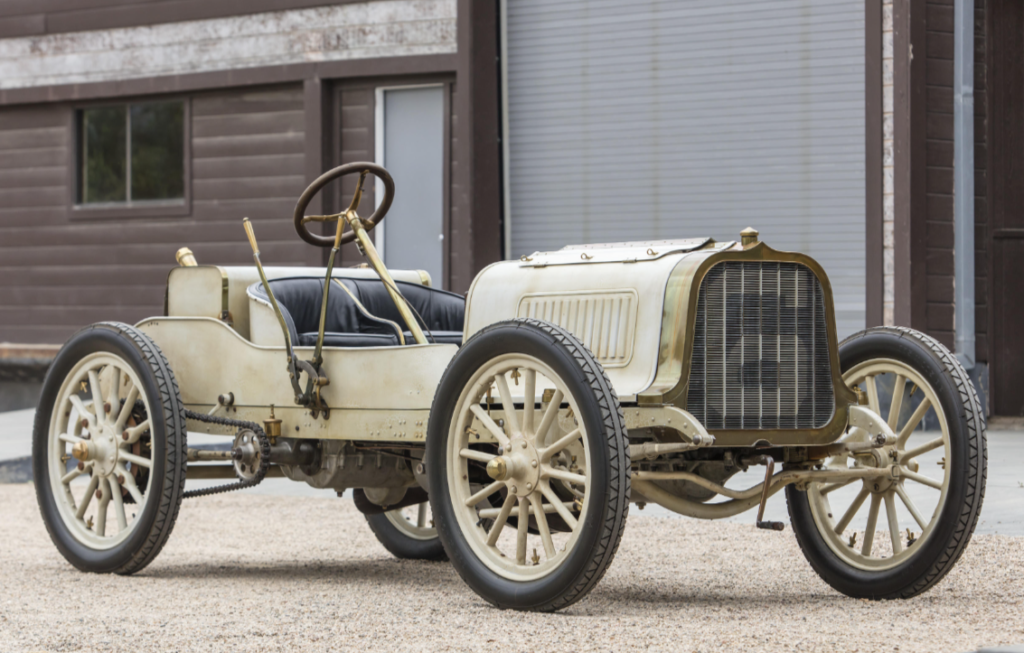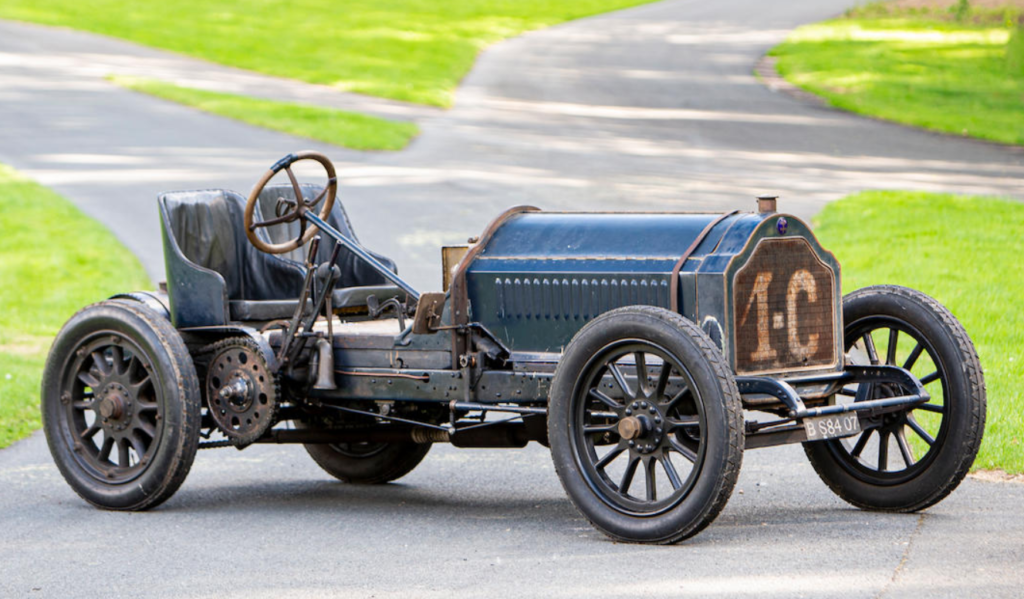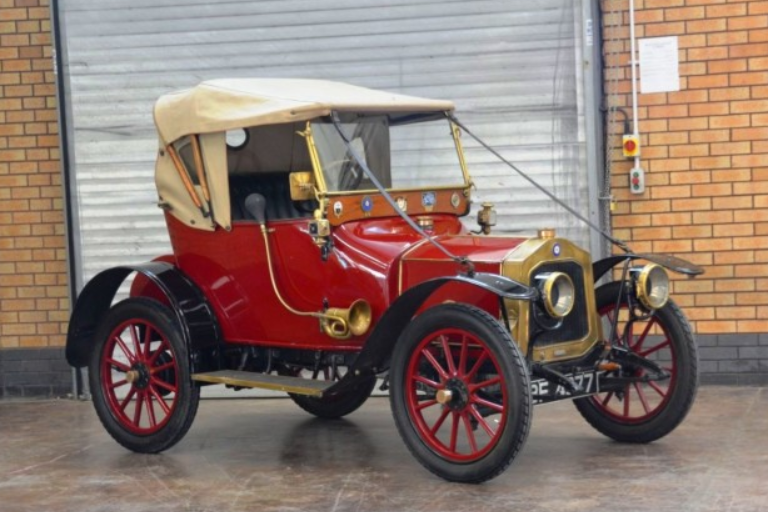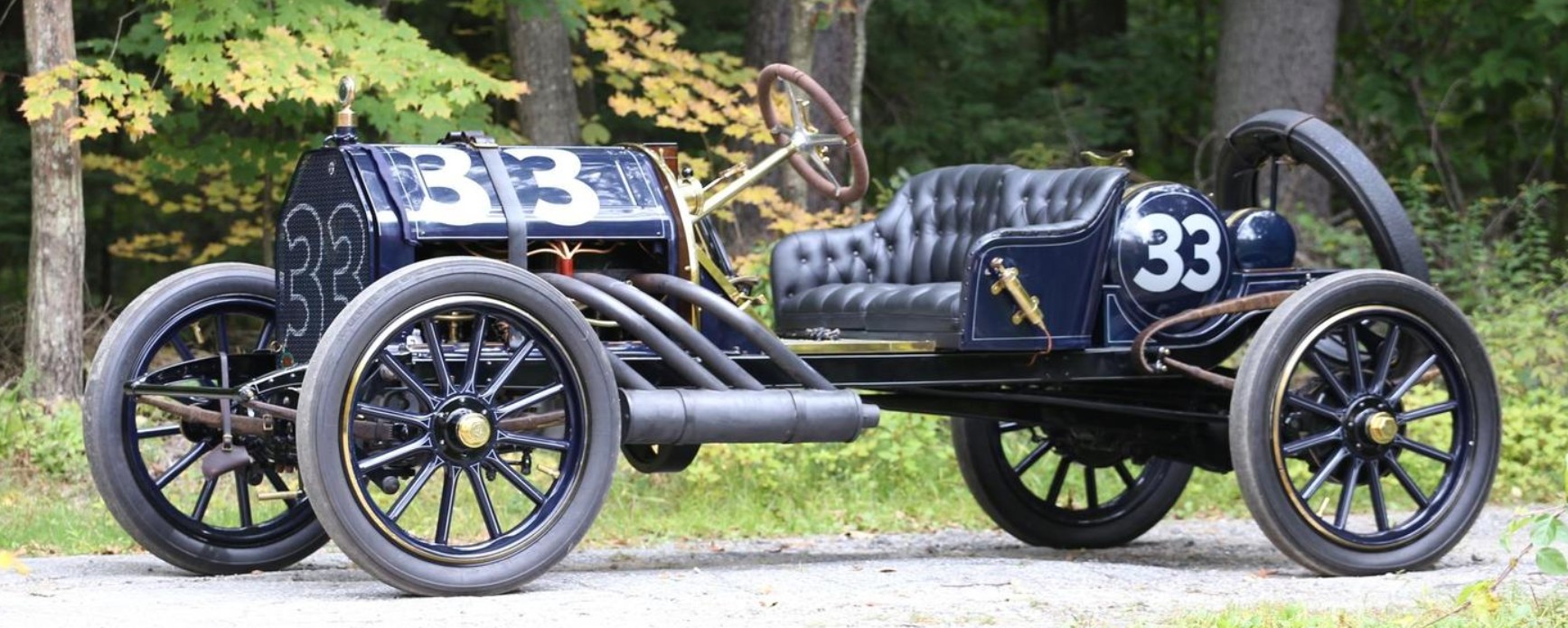1904 Pope-Toledo Two-Seat Racer
Offered by Bonhams | Carmel, California | August 18, 2023

Colonel Pope founded five different car companies, four of which had his name attached to them. The Pope-Toledo was built in Toledo, Ohio, from 1903 to 1909. After it closed, the factory was sold to Overland.
A Pope-Toledo competed in the first Vanderbilt Cup in 1904. Not this car, though. This is an assembled car that uses a 24-horsepower Pope-Toledo frame, a post-1904 3.4-liter inline-four, and a reconstructed body imitating that used by the Vanderbilt Cup car, which was driven by Herb Lytle. Lytle previously owned this engine, which is larger than a stock Pope-Toledo unit.
The car’s low bodywork implies sport, and the fact that it has dual chain drive implies some kind of speed. This may not look the part, but for 1904, it was a performance car. Then again, the car as we see it is not from 1904 but from many decades later. It has an estimate of $200,000-$300,000. Click here for more info.
Update: Not sold.




